Planting trees using drones is being tested in India

Scientists from IISC Bangalore aim to make a 10,000-acre hilly area green again
Scientists from IISC Bangalore aim to make a 10,000-acre hilly area green again
On June 5, World Environment Day, the first drone-seeding trial took place on the banks of river Pinakini in the Gauribidanur area in Karnataka’s Kolar district in India. A team of scientists from the Indian Institute of Science (IISC Bangalore) aim to make a 10,000-acre area in the Doddaballapur hill range north of the city green and turn inaccessible areas into forests. Their plan is still at an experimental stage to see how well drone-seeding can work in deforested areas, however it seems to be the only solution as planting by hand in the steep slopes is next to impossible. ‘[…]the only way is to reach by air. Doing it with big aircraft is expensive, and take-offs and landings are a problem. So the only way to do it is through drones’, says Professor KPJ Reddy.
‘What we have in mind is to at least seed 10,000 acres, and we will be doing this every year, for three consecutive years’, says Professor S.N. Omkar, adding that ‘the advantage with drones is that we have the image before dropping the seeds, and can geotag the path. Subsequently, once every three months, we can fly over that area and see the impact of dropping the seeds’. The scientists will keep track of where trees sprout up and compare it with where seeds were dropped, to determine what factors and which types of trees react best to drone planting. Each seed is packed in a ball of manure to give it an advantage starting out.
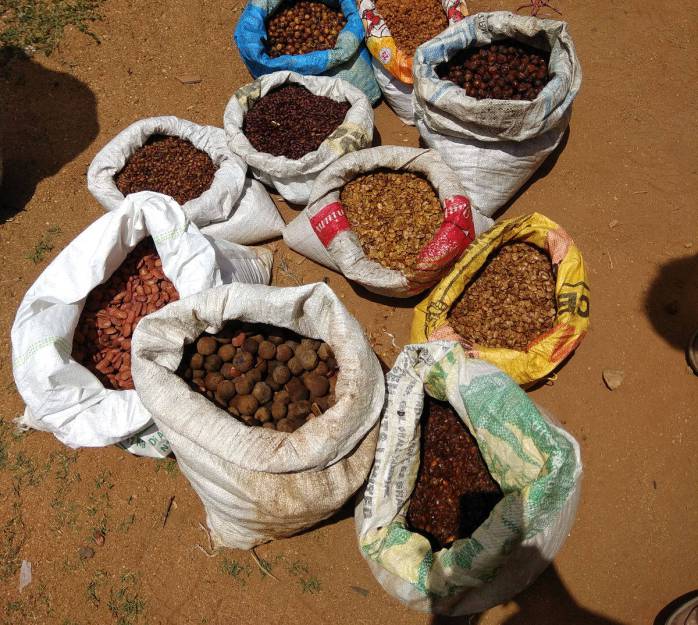
The drone-dropped seeds wrapped in balls of manure and soil along the Pinakini river bed. Photo: G V Srinivas
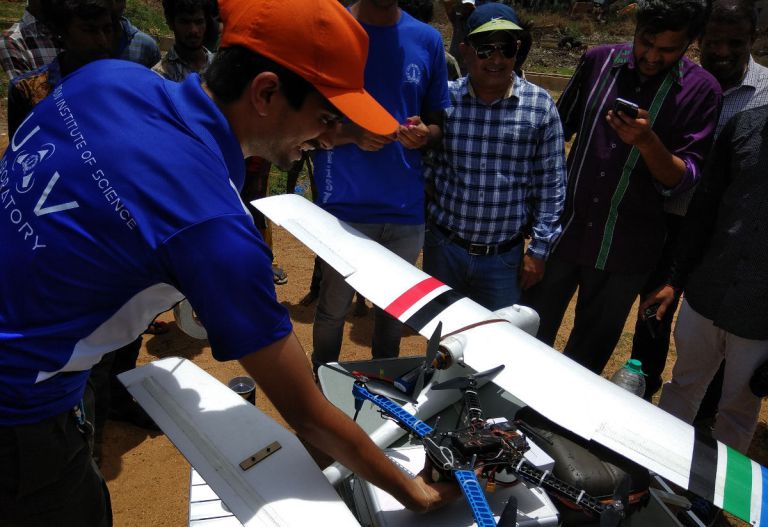
IISc’s UAV department experiments with fixed wing and quadcopter designs. Photo: GV Srinivas
A UK-based company is a pioneer in fighting deforestation using drones
BioCarbon Engineering, with offices in Oxford, Sydney and Dublin, is looking to battle deforestation, and has developed techniques for fast precision planting and entire ecosystem restoration. The company’s CEO Lauren Fletcher, a former NASA engineer, has a goal of planting 1 billion trees a year, starting from areas that suffer from deforestation, like the rainforests and jungles of South Africa and the Amazon river in Brazil. “By rebuilding forests, you not only increase the quality of the local water and air, but can bring jobs and products to a region,†says Fletcher. He admits that “There are some times when planting by hand is absolutely the right approachâ€. “But, in other instances, the drones can be a very effective tool for the right location at the right timeâ€, he adds.
The company’s methodology comprises of 5 stages:
1) Mapping (to gather information about the area to be seeded), using drones that fly over a potential planting zone;
2) Creating/constructing the seedpods, which are biodegradable and designed to help the seed germinate. The seeding pattern that best suits the terrain is selected;
3) Planting a mix of seeds in areas pre-determined by the mapping in which trees will grow best. The drones, flying at a height of 1 or 2 meters, fire the seed pods down to the ground. The pods break open upon impact, allowing the germinated seed a chance to take root;
4) Monitoring to ensure trees are growing according to plan;
Want to read more like this story?
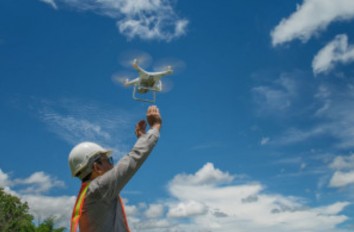
Harnessing Drone Technology for Highway Construction
Jun, 25, 2024 | NewsIn recent years, the integration of drone technology in civil engineering has revolutionized the in...

Capturing Reality with Drones - The future is here for construction business
Jan, 31, 2017 | NewsRapid increase in UAV 3D Mapping technology implementation in various scientific and industrial proj...

Drones maintain construction timetable and budget under control
Sep, 14, 2018 | NewsDrones are a perfect tool to supervise and control a construction process in order to keep the proje...
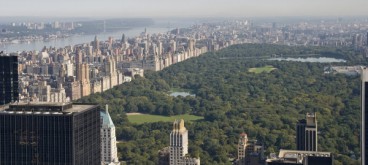
How to address deforestation in urban environments
Oct, 11, 2019 | NewsAccording to a study, published in 2018, United States cities lose more than 36 million trees per ye...
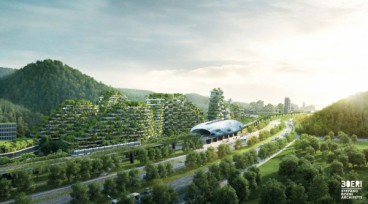
The world’s first ‘forest city’ in China joins the fight against air pollution
Feb, 09, 2018 | NewsThe plan calls for terraced buildings with almost a million plants and 40,000 trees that will annual...
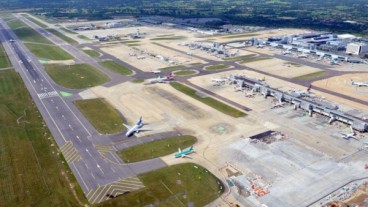
Drone owners arrested for disruption in UK Gatwick airport
Dec, 19, 2018 | NewsTwo people were arrested for using a drone, disrupting Gatwick's airport normal operations for sever...
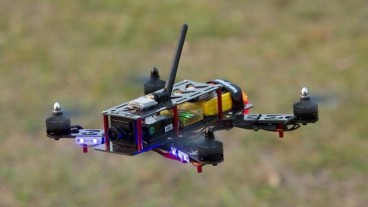
Drones will soon be used in the fight against littering
May, 09, 2016 | NewsThe initiative was taken by Dubai’s Waste Management Department in an effort to keep the munic...
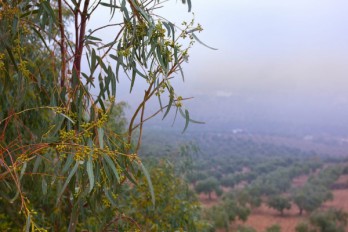
How will trees cope with ever-rising temperatures and extreme heatwaves?
Mar, 09, 2018 | NewsAustralian researchers have made an interesting new observation Australian researchers have made an...

Landmark Approval: BVLOS Drones Cleared for UK Rail Surveillance
Jun, 19, 2025 | NewsThe UK Civil Aviation Authority (CAA) has authorised Drone Major Group to conduct the country’s fir...
Trending

Taipei 101’s impressive tuned mass damper
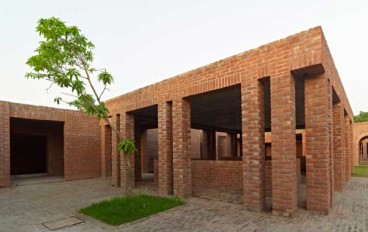
Characteristics of Load Bearing Masonry Construction

Morocco Implements Landmark Dam Perforation to Combat Water Stress in Marrakech
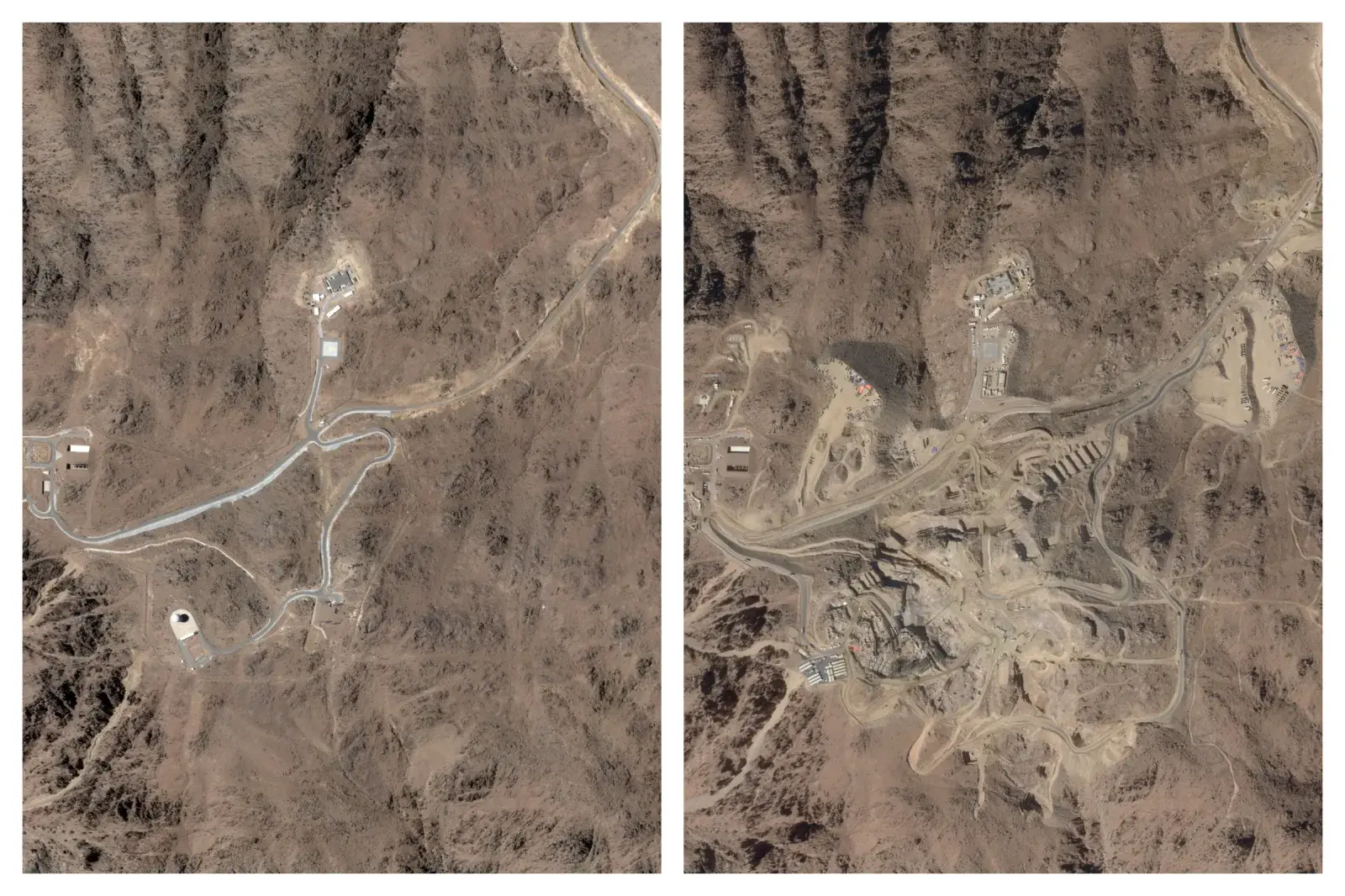
The Line at Neom faces feasibility reassessment while construction continues
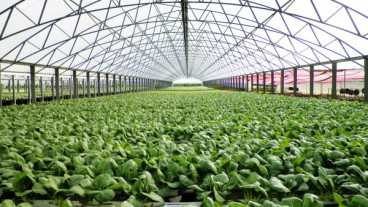
Dutch greenhouses have revolutionized modern farming

Suspension bridge buckles under force of deadly super typhoon in Philippines

Egypt and Qatar launch $29.7 billion Mediterranean coastal real-estate project

